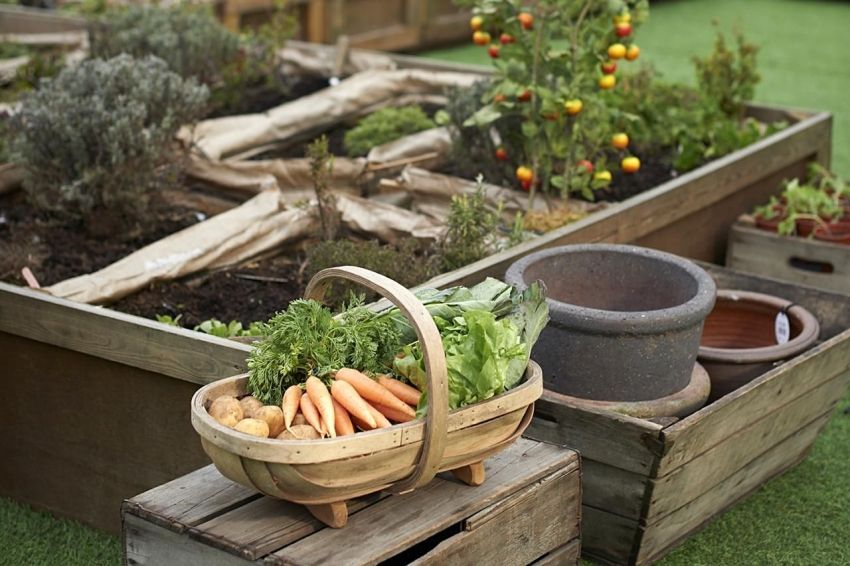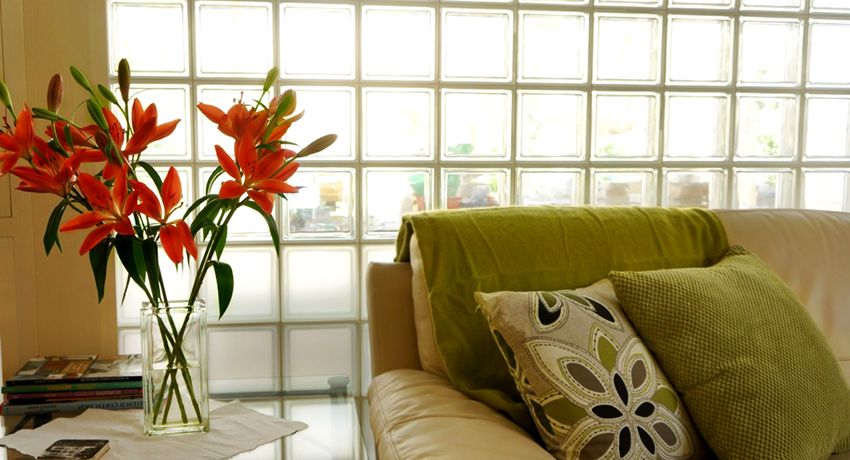From this article, you can find out in what order step-by-step production of warm beds is done with your own hands in the spring, as well as familiarize yourself with the basic rules of processing and preparing the soil, learn the most popular manufacturing techniques for growing various vegetable crops, get access to basic information and video reviews. . The text details the garden arrangement method recommended by Igor Lyadov.
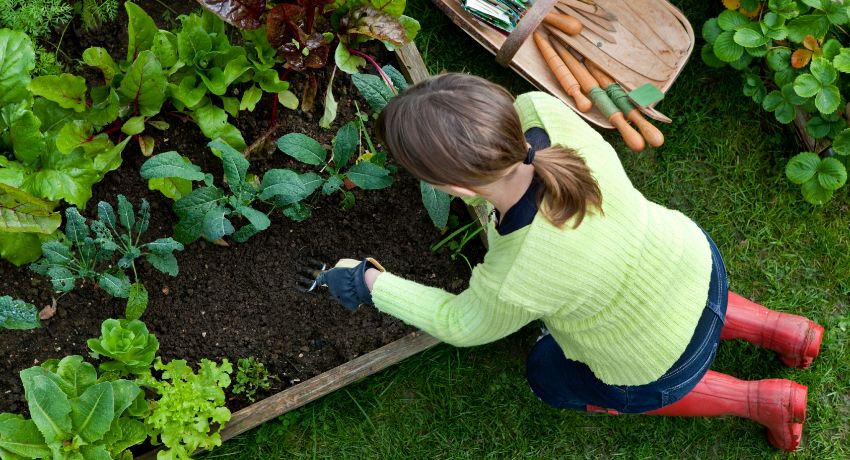
Step by step making warm beds with their own hands in the spring: basic information
Warm beds – the best option designs, which is suitable for growing most crops. Most often they settle in the fall, but this process can be transferred to the spring. Of course, in this case the technology has certain subtleties. Step-by-step recommendations, photos of warm beds and video reviews can be used as a visual aid for working on the site.

This kind of beds is presented in the form of frames, filled with:
- fertile soil;
- compost;
- fertilizers;
- straw
Helpful advice! If the garden is planned to be set up in the spring, it is better to build a warm garden for cucumbers without manure. This component is too actively decomposed, which is why plants can be harmed.
Smart or warm beds have certain features that distinguish them from conventional designs.

What are the advantages of the device warm beds in the spring:
- plants receive the maximum amount of heat and nutrients, regardless of the location and quality of the soil on the site;
- spring frosts will not be able to harm the landings, which are reliably protected from freezing;
- plants do not need an additional dose of fertilizer, because the soil already contains the necessary nutrients;
- the presence of mulch in the composition of the filler slows down the process of evaporation of moisture. Thus, the plants will not dry out even without abundant watering on hot days, and the root system will not lack water;
- a layer of mulch effectively restrains weeds, so the bed requires minimal care. Weeds dry up and rot over time, providing an additional amount of fertilizer;
- designs allow, if desired, to convert warm beds into greenhouses. To do this, you must install over the frame of the arc and stretch the film over them. Thanks to this, it will be possible to get an early harvest;
- the crop does not come into contact with the soil, so the fruits are kept clean and dry, maintaining their freshness;
- if each year to adhere to the correct pattern of alternation of cultures, such a bed will last at least 4 years.

The first step is to determine the size of the future bed. This indicator is selected taking into account which vegetables will be subsequently grown. In addition to the beds, paths are also applied to the plan for future construction. The best option for arranging the garden will be a long ridge with a convenient approach to them. The height of the structure depends on how deep the plant root system is located. Sometimes warm beds can reach 1 m in height.
Helpful advice! In order not to get lost with the size of the beds at the design stage, it is recommended to sketch out a planting scheme. This will help to navigate and correctly calculate the number of structures, their size, as well as a beautiful location on the site.
How to make a spring bed with a drainage system:
- On the site according to the developed scheme marking is applied. The territory is carefully prepared: freed from debris, large stones, stumps.
- A trench is dug needing depth.
- The installation of the box, whose height is about 60 cm, is carried out. For the manufacture of the box, old slate, wooden bars or boards can be used. Alternatively, any other available materials may be used. If you intend to use the stationary bed for a long time, its sides can be folded from bricks or stones. The last version of the material looks noble, but requires a significant investment of money.
- At the bottom of the grid is laid, which will prevent access to the garden rodents.
- The drainage system is being laid. For this, broken bricks or stones are used.
- According to the chosen method, the layers of fertilizers are stacked.
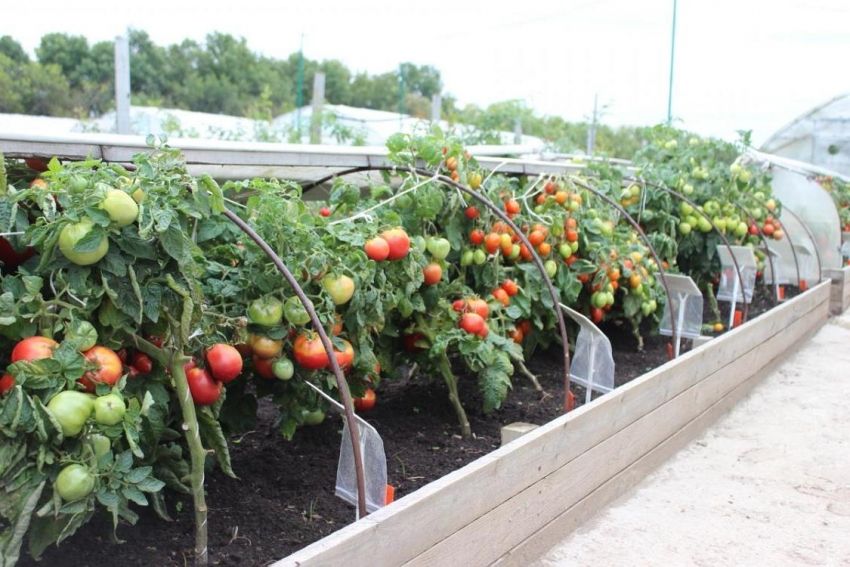
It does not hurt to think in advance about the possibility of installing arcs for organizing a greenhouse and deepen pipe sections in the required places.
There are many trench filling schemes in order to increase soil fertility. Therefore, many people have a question when creating a warm bed with their own hands, what to put first on the bottom of the structure and what the next layers should be. In fact, this principle of creating a kitchen garden is based on the formation of a compost pit, due to which high-quality feeding of plants is carried out, heating of plantings due to the heat released in the process of decomposition. As a result, the growth and maturation of crops is significantly accelerated.
Helpful advice! If the construction of a warm bed in spring is carried out on peat soils, then it is recommended to put cotton fabric previously soaked in potassium permanganate on the grid. To do this, prepare a solution of 2 g of potassium permanganate in a bucket of water. At 1 m? Square will need about 2 liters.
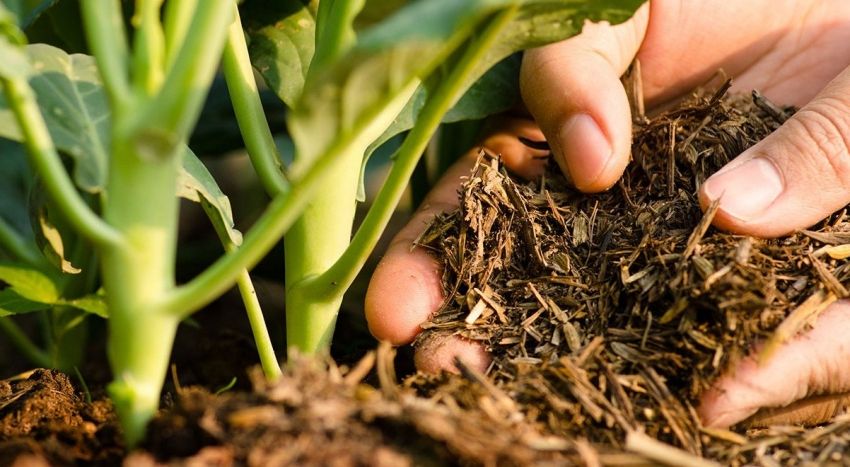
The standard filling scheme is as follows:
- The lower layer is formed from materials that decompose and rot over a long period of time. For these purposes, suitable large wood chips, branches, trunks of plants such as Jerusalem artichoke, sunflower, corn.
- The second layer must be organic. To fill the beds at this stage, you can use weeds, leaves, tops, plants, peel, remaining after cleaning fruits and vegetables.
- The third layer is formed from chemical fertilizers, which act as catalysts that enhance the decomposition process. Use of chalk, ashes is allowed. You can put a layer consisting of paper or newspapers.
- If this is necessary, when creating smart beds with your own hands, you can repeat the fertilizer laying pattern, except that the wood layer is re-created from thin branches and small chips.
The top layer is fertile soil, which should be covered with straw.
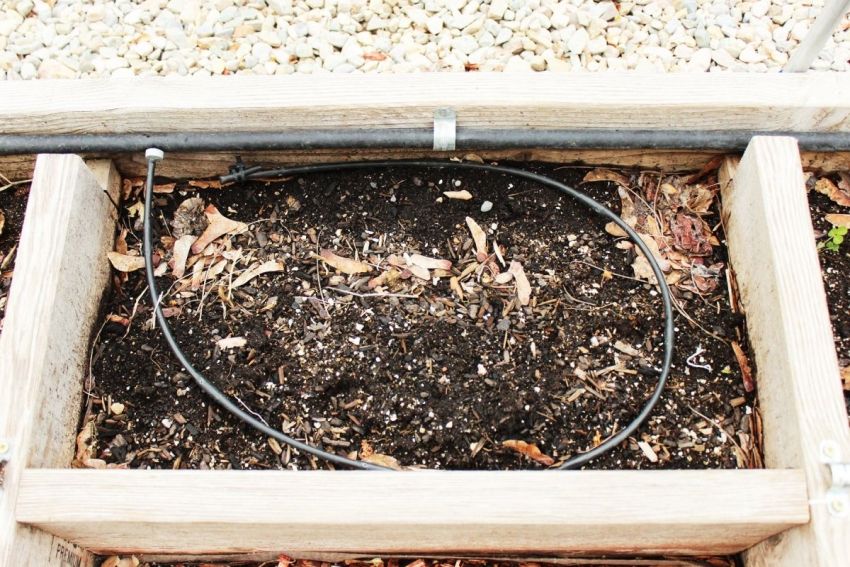
It takes about 5-8 years for all fertilizers that fit into the construction of a warm bed. As a result, the usual fertile soil forms in the frame. In the future, it can be effectively used in order to improve the physical condition of the soil in other areas of the summer cottage.
Note! It is strictly forbidden to use the tops of plants that are infected with diseases to fill the bed. Otherwise, the soil will turn into a breeding ground for garden infections, from which plantings may be affected.
Layer Fill Table
| Interlayers | Type of filler | Recommended layer thickness, m |
| one | large branches and branches, old boards | 0.2-0.3 |
| 2 | tops of plants remaining from last year | 0.2-0.3 |
| 3 | small size organics, manure, straw | 0.15-0.2 |
| four | black soil | 0.1-0.15 |
After the bed is filled, the design is filled with a large amount of water, which must be warm. The maximum allowable volume of liquid is 7 buckets per m? square
The warm bed is suitable for growing almost any variety of crops. In some cases, structures may last more than 4 years, but the maximum possible period does not exceed 6 years. The fact is that plants each year draw nutrients and microelements from the soil, so in the first year for growing crops, you need to pick up the most demanding in terms of heat and nutrition vegetables and gradually move to less capricious crops.
In the first year, it is recommended to use a warm garden bed made of cucumbers, cabbage, zucchini, pepper, tomatoes, pumpkin or eggplants. For 3-4 years suitable pepper, beet, potatoes, cabbage, beans and carrots. After this turn, the soil loses most of its nutrient reserves, so unpretentious crops are planted on the garden. Salads, peas, celery, and greens belong to this category of plants.
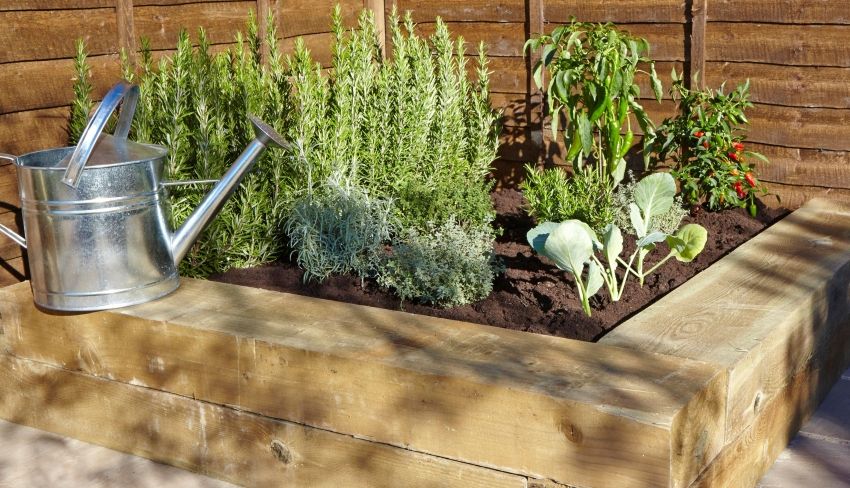
Helpful advice! To ensure good air circulation during the laying of the nutrient material, dry components need to be alternated with raw fertilizers. Do not throw away the turf, which is removed from the surface during soil preparation. It can be mixed with plants stacked as a second layer.
It is not recommended in the first years of operation of the garden to plant plants that have a tendency to accumulate nitrates. Therefore, planting cabbage lettuce, onions, dill, parsley, beets and radish is better to postpone to a later date. Particularly enterprising gardeners manage to harvest from the garden twice a season, planting salads and greens in early spring, and then using a warm bed for cucumbers or tomatoes.
The network has many recommendations for planting crops in warm beds with their own hands, video reviews of experienced gardeners can be used as a visual aid.
Tips experienced gardeners to create warm beds in the spring:
- in order to get a rich harvest from thermophilic vegetable crops, it is better to install beds along the southern wall of the building. For these purposes, suitable as a residential house, and any other buildings on the site, as long as landings are not shaded for more than a couple of hours a day;
- The process of decomposition of organic matter can be accelerated. For this purpose, special preparations are used that are distinguished by biological activity;
- if the production of a warm bed for strawberries was done correctly, the garden will have good drainage characteristics and plantings will be protected from flooding during heavy rains. The surface of the structure should be covered with black film, which not only creates the greenhouse effect, but also protects the berries from dirt;
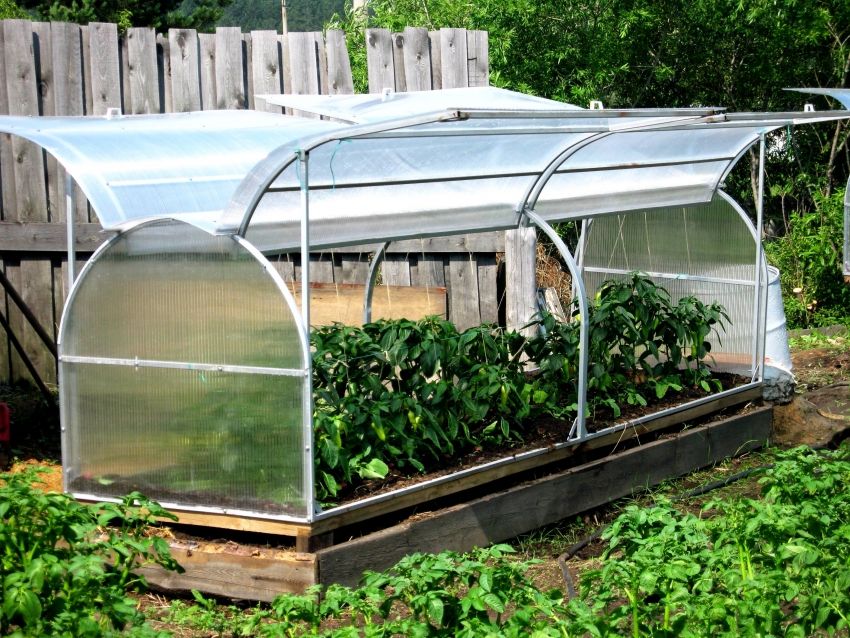
- the soil on high beds needs frequent watering. Abundant moisture contributes to the decomposition of the lower layer of fertilizer, which provides additional heat to plant;
- If wood is used as a building material, before making a warm bed for cucumbers, all the structural elements must be pretreated with an antiseptic. Timber needs protection from rotting. A great result will help achieve hot linseed, with which the processed wooden blanks.
Note! Experienced gardeners recommend in the late fall to produce additional warm beds. For this, the upper layer is partially opened, where plant residues and organic waste are poured throughout the autumn and winter.
Igor Lyadov is a Russian agronomist who practices the method of traditional natural farming. This technique eliminates the use of chemical fertilizers that pollute water and soil. The technology involves treating the soil in a gentle way, returning the nutrients back to the ground after the plants are grown, and protecting the contents from temperature changes.
The construction of a warm bed for cucumbers in the spring avoids stagnation of water, dirt and confusion on the site. In fact, a vegetable container with fences made of timber, logs, boards, stone, slate or bricks is created on the territory.
Gardens for the lazy: photos and recommendations for creating a garden
Simple and interesting designs that you can make yourself, tips on designing and planning a beautiful garden.
How to make a warm garden bed for cucumbers in the spring of logs using Igor Lyadov’s technology:
- A flat site is being prepared.
- Logs are laid on the ground and fixed. In some cases, they can even be slightly buried in the soil for reliability. The optimal width of the structure is 0.8-1.2 m. Moreover, the hotter the regional climate, the wider the bed should be. The length of the structure can be arbitrary.
- Screws or nails can be used to fix the logs to each other.
- To stop the growth of perennial weeds, a layer of cardboard is laid on the bottom. This measure well blocks the development of pests such as wireworm and crush.
- A small layer of sand is poured over the cardboard.
- Next is the tab of organic fertilizers and plant residues.
- To protect the bed design from overheating and insects, logs should be whitened or painted. For these purposes, it is better to use a water-based coloring composition intended for facade work.

Important! Perennial weeds should not be laid inside the structure.
Fertilizer layers need to be infused with grass or manure infusion. On top of all this, a layer of earth is formed, 8-10 cm thick.
Narrow beds, which are created on the basis of Igor Lyadov’s technology, make it possible to increase the vegetation period of the plants, so that the crop is rich no matter what conditions the dacha has.
How to make warm beds in a greenhouse using Igor Lyadov’s technology:
- Pegs are being mounted along the long sides of the structure. Elements must be located directly opposite each other. They must be installed in equal increments, the size of which is not more than 1 m.
- Plastic pipes of the appropriate diameter are put on the ends of these pegs. As a result, identical arcs will form over the bed at equal distances from each other.
- The resulting design is covered with a film material.
A sheltered warm bed of this type is ideal for the early cultivation of strawberries, strawberries, greens and vegetable crops. In order for plants to get enough oxygen, the farmer recommends planting them in a checkerboard pattern. Eggplant, cabbage and other varieties of large crops are planted on a bed in two rows, smaller plants such as onions or radishes – in four.
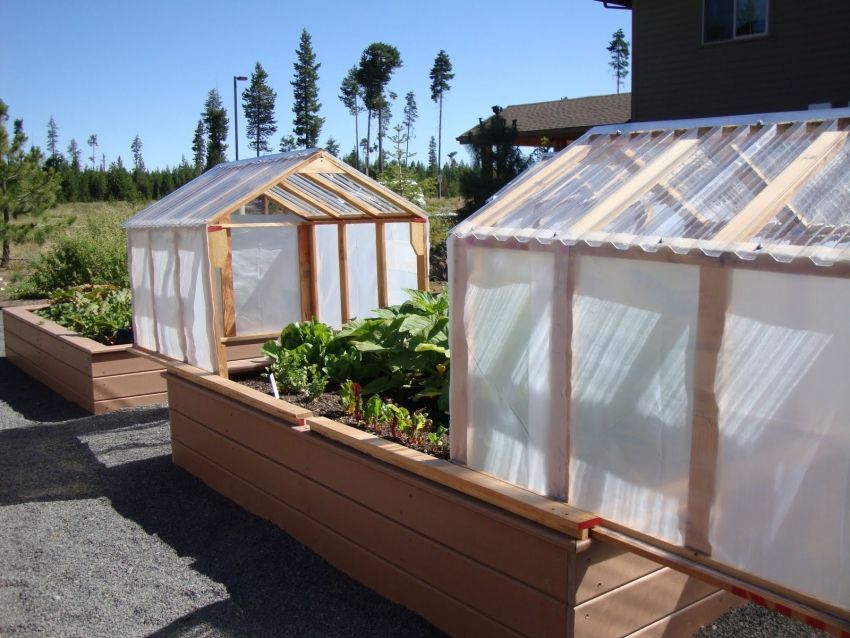
The author’s method of growing vegetables in warm beds also includes recipes of infusions that can be prepared independently. They contain lactic acid bacteria and yeast. These infusions are used as a natural alternative to chemical additives. The function of the starter is the mash. To do this, take 3 liters of water from the well, which adds a package of dry yeast and 5 tbsp. l Sahara. After 2-3 days, the mixture will ferment.
Important! To prevent fungi from dying, the container with the infusion should be stored in the cold.
All recipes infusions are designed for a capacity of 200 liters. Mixture infused for at least a week. Before using the herbal composition must be diluted by half, and the infusion of manure or litter is bred even more.
The first recipe:
- sifted ash (shovel);
- bird droppings or manure (half a bucket);
- fallen leaves or rotted bedding from straw (bucket);
- humus, turfy or rotten compost (shovel);
- clean sand (shovel);
- whey or fermented milk product (1 l);
- mash (3 l).
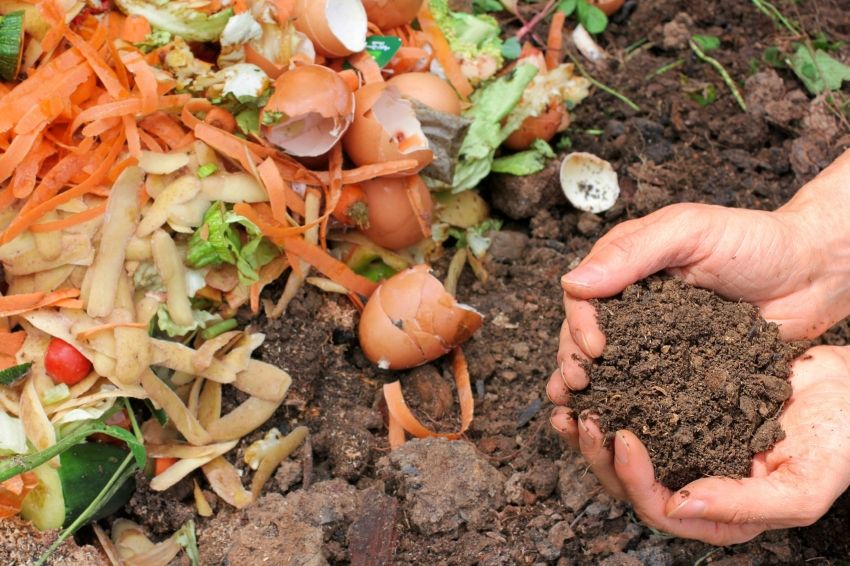
The second recipe involves filling the container by 2/3 of the volume with mowed grass or weeds. To this is added a pair of ash shovels, which must be sifted. After that, the mixture is filled with water, and the container itself is closed with a film. To achieve full readiness means it will take several weeks. Before processing the beds, the composition is diluted in a ratio of 1:10.
According to the third recipe, the container needs to be filled with manure or droppings 1/3 of the volume. The residue is filled with clean water. The resulting mixture is infused for two weeks (no more). Infusion cooked in manure, before use, should be diluted 1:10. The composition of bird droppings is diluted at a ratio of 1:20.
Vegetables grown on warm beds, in many ways superior to the results of traditional farming. The constructions are less labor-intensive in terms of processing, allow to restore soil fertility and increase the yield of vegetable crops. At the same time, the purity of nature is preserved and human health is preserved, since chemical fertilizers are not used for plant nutrition. For this reason, many summer residents use the technology of warm beds on their plots.
